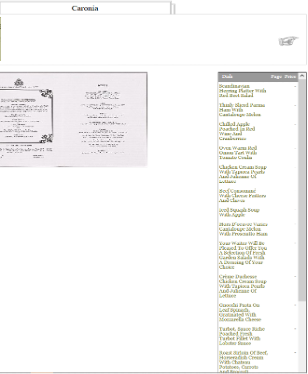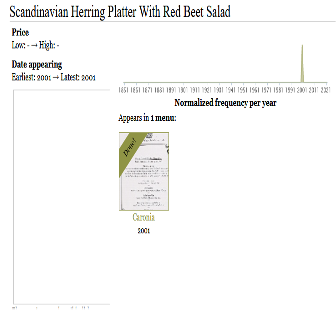Food for Thought
The Data
The dataset that I found interesting was from a website called What’s on the Menu? with the data being dishes from the early twentieth century in New York City. The curators primarily made this data set to keep records of dishes made in the past, but they also allow anyone to contribute through the process of making an account. While researching on the topic of food, it made me realize the influence and variety food has on other people. As I was searching through the menus I noticed that the restaurants each had different cultures and ethnic food tied to them from Asian foods, Scandinavian, and also some more Italian inspired dishes.

Meaning of Food
From the amount of different cultures I’ve seen in these menus, I can differently see that there could be many immigrants arriving in New York City to make a living by creating dishes from their homeland. I believe that food is very important as it can bring people together, spread awareness for cultures, and everyone must eat so exposure is inevitable.

Data Set Issues
Some problems that I found with the data set are there aren’t that many menus to have a firm opinion on the variety of food in New York City. The only problems that come to mind are the questions relating to if people actually ate the food come to mind or the popularity of certain restaurants. These questions pose a point of if people were willing to try the food or if those restaurants were very niche. Although a dish’s success can mostly likely be assumed due to a chart of the dish appearing on the menu.
Final Thoughts
Personally, food is a topic that I believe everyone can relate to, whether it comforts you or gives delight, the data shows which dishes were popular enough to be passed on through the years from menu to menu. I think its great that there is a catalog of menus from New York City on a public database because it allows everyone to see what certain restaurants were making and what generally made the cut.
Sources
http://menus.nypl.org/menus/decade/2000s
Guest post by: Thomas E.